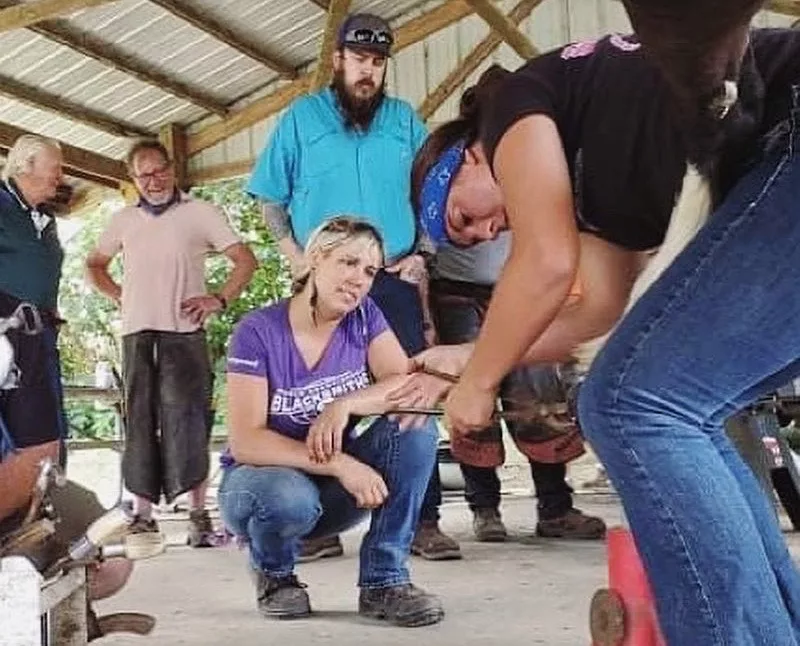Working under a horse all day is hard on the body — especially the back. And there are always risks for a wreck. With close to 30 years of shoeing, 18 of those full-time, Jacob Manning of Roosevelt, Utah, wishes he had taken better care of his back. He stretches daily and sees a chiropractor every 2 weeks to manage five herniated discs and tendinitis in both hips.
“The best advice I can give is to try not to do bad horses,” he says. “There are three options I give clients: train it, drug it, or call somebody else.”
Jacob Butler of Crawford, Neb., agrees that stretching in the morning and evening is essential to staying flexible and stretching sore muscles. And that he has found horseback riding to be great therapy for a sore back. Also, being strategic in the work process supports longevity.
“Don’t stay under the horse any longer than you need to,” he says. “Always push yourself to become more efficient. A stopwatch help improve your efficiency. Pace yourself, so you don’t overdo the number of horses you are able to work on. You only have so many horses in you, and you can do them all at once or spread out over a career.”
Levi Trnka of Albuquerque, N.M., also relies on stretching and chiropractic care to protect his body in this physically demanding career. When he moved to Pennsylvania to ride with FARRIER, he quickly learned a long career is a marathon, not a sprint. The team he rides with sometimes shoes 40 horses a day.
“I think you can burn yourself out going as quick and hard as can all the time,” he says. “It’s not a race, it’s a run be consistent and stretches in there and having a big chiro in there makes big difference.”
Learning early on the best positions to put yourself in and how to handle situations can help avoid many injuries. For example, Lori McBride of Louisville, Ohio, watches her daughter Glynis’ body position closely. She coaches Glynis on how to position herself better to prevent twisting and to use her stance at the anvil to her advantage.
“My mentor would always say quit going home and doing the same wrong thing 1,000 times,” she says. “Then you have to unlearn all that and put all that stress and repetitive damage to yourself by doing it repeatedly the wrong way. I think that as a woman, I learned early on not to fight a horse. I’m not very big, and I don’t want to fight. I’ve taught Glynis that basic horsemanship goes a long way and that getting them to a comfortable place can keep you injury-free.”
Glynis agrees this is one of the things she is most grateful for having early in her career.
“I will not learn bad habits now so that I won’t have to change my complete routine down the road,” she says. “I also make sure I am working with the horse, working smarter, not harder. I make sure to stay in good general shape and eat well.”
Bodie Trnka of Jordan, Minn., adds that finding a reasonable pace and rhythm is essential to longevity. A big part of that is running it as a business, an outlook he gained studying ag business in college. That means getting over the fear of charging good money.
“Some people like to work too cheap,” he says. “The more horses you do the more you wear yourself out,” he says. “Paying attention to the business side and not letting the good money lead to buying expensive houses and boats and charging good prices means you don’t have to shoe a million horses to pay for it all.”







